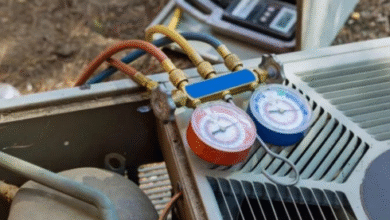Softening the Waters of St. George: Should You Choose Salt or Potassium?

If you’ve lived in St. George, Utah for more than, say, two weeks, chances are you’ve noticed something strange going on with your water. Spotty glasses fresh out of the dishwasher. That telltale chalky buildup around your faucets. Maybe your skin feels like it’s lost a bit of its glow. Welcome to the world of hard water.
Fortunately, water softeners are as common here as red rocks and sunshine. They’re not just nice to have—they’re practically essential. But once you’ve installed a softener, a not-so-small question arises: What should you be putting in it?
That’s where the great potassium chloride vs salt for water softener debate kicks in. It’s not just about taste or cost. It’s about health, environmental impact, efficiency, and yes, even a little local context. Let’s dig into the details—and help you make a choice that actually fits your home and your lifestyle.
First, Why We Soften Water in the First Place
Hard water isn’t dangerous, but it is a pain. It’s full of calcium and magnesium minerals that don’t play nice with pipes, appliances, or your skin. That’s where water softeners come in—they pull out those minerals and replace them with something else, usually either sodium or potassium ions.
This process helps reduce scaling, improve soap performance, protect your plumbing, and make your skin and hair feel smoother. But depending on which softening agent you choose, the experience—and consequences—can feel a little different.
The Salt Standard: Sodium Chloride
Sodium chloride (you know, salt) is the original water softening solution. It’s been the go-to option for decades, mostly because it works well and doesn’t cost a fortune. Most hardware stores in Utah stock it in 40-lb bags, and your water softener likely came tuned to work with it right out of the box.
Why go with salt?
- It’s efficient. Sodium is highly effective at replacing hardness minerals.
- It’s affordable. Compared to potassium, it’s significantly cheaper.
- It’s widely available. You’ll find it everywhere from Costco to corner stores.
That said, there are a few drawbacks. Softened water using sodium chloride contains trace amounts of sodium—not a big deal for most people, but worth noting if you’re on a low-sodium diet. Also, salt discharge from softeners isn’t ideal for the environment, especially if your system flushes into soil or septic.
The Cleaner, Greener Option: Potassium Chloride
Then there’s potassium chloride—the softer softener, so to speak. Chemically, it works much like salt. The key difference? No added sodium. That makes it a more appealing option for people with dietary restrictions, or folks simply trying to be a little more conscious of what goes into their bodies and the earth.
Benefits of potassium chloride:
- No sodium. Better for drinking, better for health.
- Plant-friendly. Potassium is a fertilizer, so it won’t hurt your garden if you irrigate with softened water.
- Eco-conscious appeal. If you’re trying to make your household more sustainable, this is a solid choice.
Here’s the catch—it costs a lot more. Often three to four times the price of sodium chloride. And it’s slightly less efficient, meaning your system might regenerate more often (which means more water and energy use). For many, the extra cost is worth it. For others, not so much.
So… What Makes Sense in St. George?
Let’s talk local. Water softener St George Utah users face a specific challenge: some of the hardest water in the state. Southern Utah’s geological makeup means mineral-rich water is just part of life here.
That’s why water softeners are so common in homes and businesses—and why most people default to sodium chloride. It’s cost-effective, available in bulk, and gets the job done. But with growing awareness of environmental impact and health, potassium chloride has been catching on, especially among eco-conscious homeowners and those with gardens or dietary concerns.
Some St. George residents take a hybrid approach: using sodium chloride during most of the year, then switching to potassium during spring and summer to protect landscaping. It’s not a perfect system, but it’s a clever one.
Quick Tips for Making the Switch (or the Choice)
- Don’t mix them. If you’re switching from salt to potassium or vice versa, empty and clean your brine tank first to avoid clumping and reduced performance.
- Check your softener’s specs. Most units can handle both types, but it never hurts to read the manual or check with the manufacturer.
- Stay on top of maintenance. Whatever you use, monitor your system monthly. Top off the tank, check salt bridges, and schedule occasional cleanings.
Final Thoughts: It’s Not Just a Bag of Pellets
Sure, deciding between salt and potassium might not seem earth-shattering. But it’s one of those choices that ripples through your daily routine—literally. From your morning coffee to your evening shower, softened water touches everything.
So whether you prioritize budget, health, or environmental impact, choosing the right softening agent makes a real difference. And in a place like St. George, where water is hard but the standards are high, making the right call matters more than you think.



